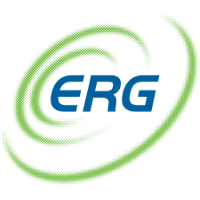
ERG SpA
MIL:ERG


| US |

|
Johnson & Johnson
NYSE:JNJ
|
Pharmaceuticals
|
| US |

|
Berkshire Hathaway Inc
NYSE:BRK.A
|
Financial Services
|
| US |

|
Bank of America Corp
NYSE:BAC
|
Banking
|
| US |

|
Mastercard Inc
NYSE:MA
|
Technology
|
| US |

|
UnitedHealth Group Inc
NYSE:UNH
|
Health Care
|
| US |

|
Exxon Mobil Corp
NYSE:XOM
|
Energy
|
| US |

|
Pfizer Inc
NYSE:PFE
|
Pharmaceuticals
|
| US |

|
Palantir Technologies Inc
NYSE:PLTR
|
Technology
|
| US |

|
Nike Inc
NYSE:NKE
|
Textiles, Apparel & Luxury Goods
|
| US |

|
Visa Inc
NYSE:V
|
Technology
|
| CN |

|
Alibaba Group Holding Ltd
NYSE:BABA
|
Retail
|
| US |

|
3M Co
NYSE:MMM
|
Industrial Conglomerates
|
| US |

|
JPMorgan Chase & Co
NYSE:JPM
|
Banking
|
| US |

|
Coca-Cola Co
NYSE:KO
|
Beverages
|
| US |

|
Walmart Inc
NYSE:WMT
|
Retail
|
| US |

|
Verizon Communications Inc
NYSE:VZ
|
Telecommunication
|
Utilize notes to systematically review your investment decisions. By reflecting on past outcomes, you can discern effective strategies and identify those that underperformed. This continuous feedback loop enables you to adapt and refine your approach, optimizing for future success.
Each note serves as a learning point, offering insights into your decision-making processes. Over time, you'll accumulate a personalized database of knowledge, enhancing your ability to make informed decisions quickly and effectively.
With a comprehensive record of your investment history at your fingertips, you can compare current opportunities against past experiences. This not only bolsters your confidence but also ensures that each decision is grounded in a well-documented rationale.
Do you really want to delete this note?
This action cannot be undone.

| 52 Week Range |
19.38
28.86
|
| Price Target |
|
We'll email you a reminder when the closing price reaches EUR.
Choose the stock you wish to monitor with a price alert.

|
Johnson & Johnson
NYSE:JNJ
|
US |

|
Berkshire Hathaway Inc
NYSE:BRK.A
|
US |

|
Bank of America Corp
NYSE:BAC
|
US |

|
Mastercard Inc
NYSE:MA
|
US |

|
UnitedHealth Group Inc
NYSE:UNH
|
US |

|
Exxon Mobil Corp
NYSE:XOM
|
US |

|
Pfizer Inc
NYSE:PFE
|
US |

|
Palantir Technologies Inc
NYSE:PLTR
|
US |

|
Nike Inc
NYSE:NKE
|
US |

|
Visa Inc
NYSE:V
|
US |

|
Alibaba Group Holding Ltd
NYSE:BABA
|
CN |

|
3M Co
NYSE:MMM
|
US |

|
JPMorgan Chase & Co
NYSE:JPM
|
US |

|
Coca-Cola Co
NYSE:KO
|
US |

|
Walmart Inc
NYSE:WMT
|
US |

|
Verizon Communications Inc
NYSE:VZ
|
US |
This alert will be permanently deleted.
 ERG SpA
ERG SpA
ERG SpA
Investor Relations
ERG SpA, originally founded as a petroleum company in post-war Italy, has undergone a remarkable transformation to align with the energy transition of the 21st century. Emerging from its roots in the traditional oil market, ERG has strategically pivoted to become a leader in renewable energy, capitalizing on Europe's increasing demand for sustainable energy sources. This transformation began with the gradual divestment of its oil refining and distribution sectors, redirecting its focus toward renewable energy production. Today, ERG operates primarily in wind power, with its wind farms spread across Italy and several European countries. The company harnesses advanced technologies in wind turbine design and operation to optimize energy output, directly feeding into national grids and capitalizing on governmental incentives for clean energy.
The company's business model reflects its commitment to sustainability and its insight into the evolving energy market. Through the generation and sale of green energy—primarily wind but increasingly through solar and hydroelectric sources—ERG generates revenue by supplying power to consumers and businesses seeking cleaner alternatives. Additionally, ERG benefits from European energy policies that favor renewables, which can provide financial incentives for environmentally responsible energy production. This business strategy not only positions ERG SpA as a pioneer in the green energy sector but also underlines its profitable niche in an industry abuzz with eco-conscious innovation.

ERG SpA, originally founded as a petroleum company in post-war Italy, has undergone a remarkable transformation to align with the energy transition of the 21st century. Emerging from its roots in the traditional oil market, ERG has strategically pivoted to become a leader in renewable energy, capitalizing on Europe's increasing demand for sustainable energy sources. This transformation began with the gradual divestment of its oil refining and distribution sectors, redirecting its focus toward renewable energy production. Today, ERG operates primarily in wind power, with its wind farms spread across Italy and several European countries. The company harnesses advanced technologies in wind turbine design and operation to optimize energy output, directly feeding into national grids and capitalizing on governmental incentives for clean energy.
The company's business model reflects its commitment to sustainability and its insight into the evolving energy market. Through the generation and sale of green energy—primarily wind but increasingly through solar and hydroelectric sources—ERG generates revenue by supplying power to consumers and businesses seeking cleaner alternatives. Additionally, ERG benefits from European energy policies that favor renewables, which can provide financial incentives for environmentally responsible energy production. This business strategy not only positions ERG SpA as a pioneer in the green energy sector but also underlines its profitable niche in an industry abuzz with eco-conscious innovation.





























 You don't have any saved screeners yet
You don't have any saved screeners yet
